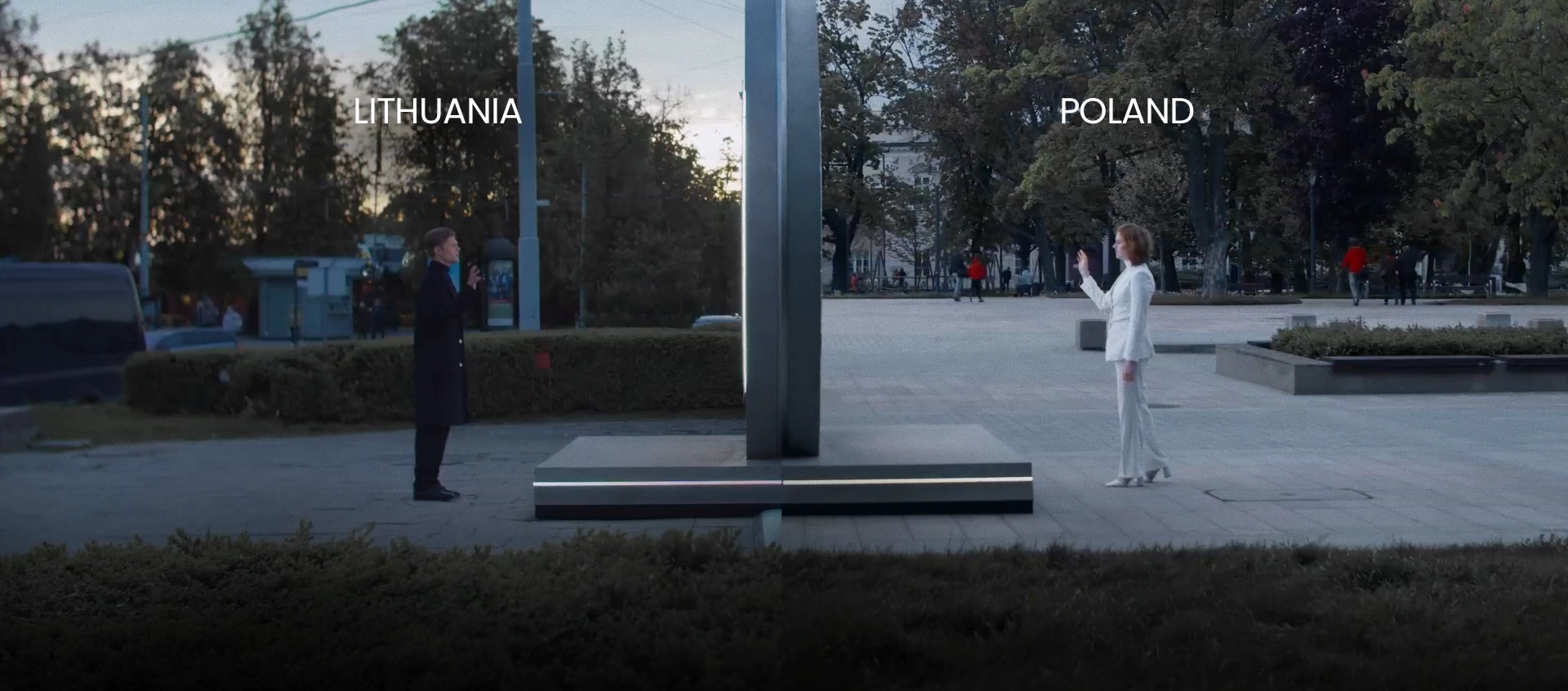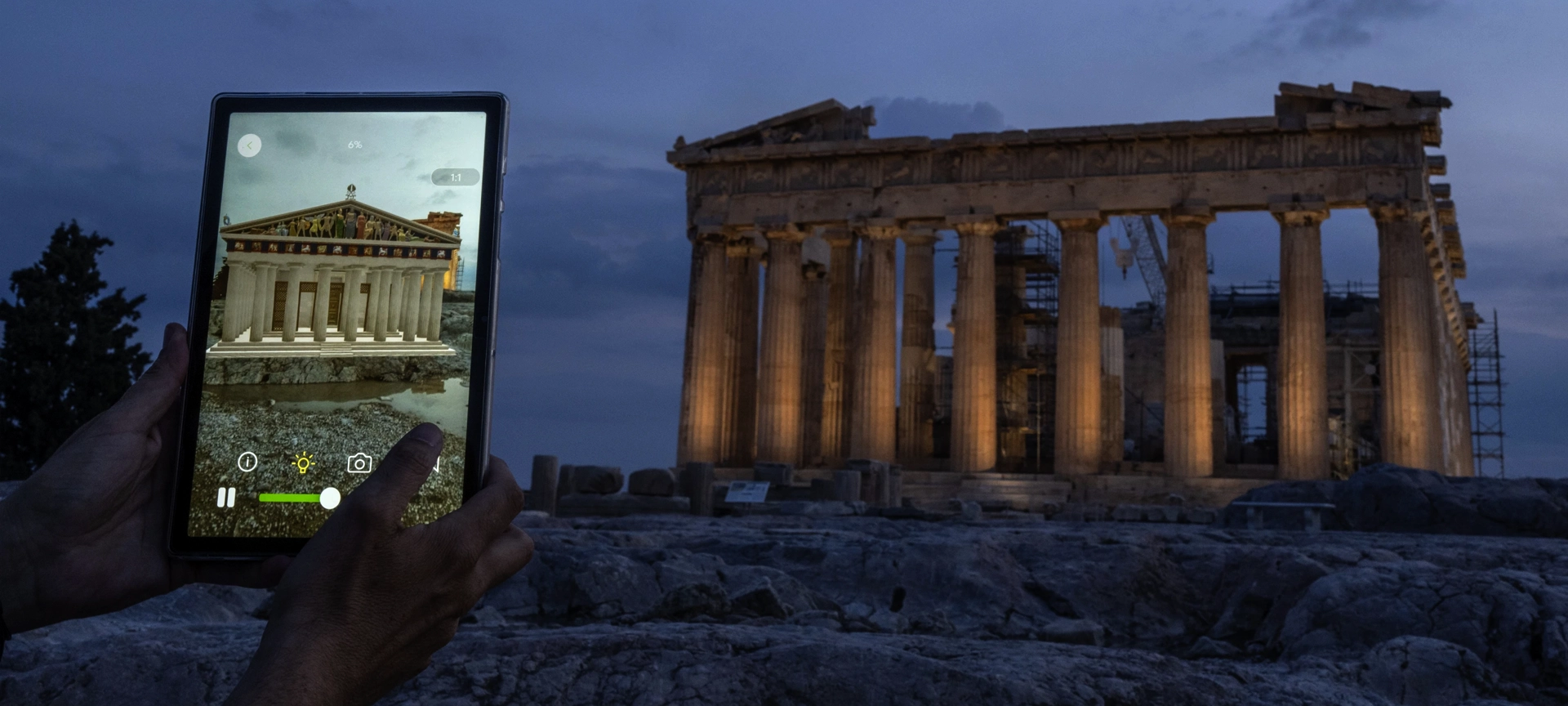
How technology is changing the face of traveling
There’s something deeply human about wanting to see what lies beyond. The urge to explore new places, meet new people, and feel part of something bigger than ourselves—that instinct never fades. But the way we travel is changing.
No longer limited by airports, borders, or even time zones, today’s technology opens new ways to connect and experience the world. You don’t need a passport to cross continents or a plane ticket to step inside a masterpiece. Now, with VR travel experiences, virtual tourism apps, and immersive tools, all it takes is a glance, a turn, a tap, and suddenly, you’re somewhere else entirely.
Here are six innovations that are transforming how we move through the world and through time. From AR doors that open to faraway places, to living paintings that speak back, these aren’t just upgrades to your journey, they’re reimagining what it means to travel altogether.
1. Travel Anywhere with AR
There is a saying that doors are really portals, gateways that connect two different worlds. This time, that idea isn’t just metaphorical, but quite literal. Because that’s exactly what the AR Portal does, it doesn’t matter if you’re in the middle of a crowded square or standing alone in your backyard. With just a few taps on your phone, a door appears in front of you, you can walk right in. Where you go is entirely up to you. Somewhere far, somewhere familiar, or somewhere completely unexpected. Even if it’s just a quick visit to a painting, like Vincent van Gogh’s bedroom in Arles.
2. The Portal of Unity
What if your loved ones were hundreds of miles away, but still just a glance apart? We live in a time where technology makes the impossible feel ordinary. In 2021, the city of Vilnius, Lithuania, turned that idea into reality by installing a circular portal that connects live to the city of Lublin, Poland, over 600 km away.
This installation works like a two-way video link, but feels far more human. It creates a virtual window between countries, allowing people to meet, wave, and share a moment without ever leaving their own city. It’s not just about seeing another place. It’s about feeling like you’re part of it.
3. 360-degree Video Installation
At the Berlin Sony Center, Lufthansa created something special, a life-sized, 360-degree video installation that let people explore vibrant destinations around the globe, without ever boarding a plane.
With the Lufthansa Travel Compass, visitors could step inside and slowly turn in any direction. As they moved, the world moved with them. Bustling streets, famous landmarks, and quiet coastlines shifted into view, each one appearing as if it were just a wall away.
It didn’t feel like watching a video. It felt like standing inside another place. A reminder that the world isn’t as far as it seems; sometimes, it’s just one turn away.
4. Storytelling with AR Character
You’re walking through a museum, surrounded by paintings that have stood still for centuries. Then suddenly, one of them steps forward. A character from the canvas comes to life, looks you in the eye, and begins to speak.
That’s the experience Cardo has made possible. As you enter the gallery, you’re handed a tablet and headset. From there, each exhibit becomes more than just something to look at. Characters from the artwork or sculpture appear before you in augmented reality, guiding you through their world, telling their story in their own voice.
5. Augmented Historical Reconstruction
With the Chronos AR app, history doesn’t just sit behind velvet ropes, it rises before your eyes. Developed by Cosmote and Greece’s Ministry of Culture, this mobile experience brings the Acropolis back to life.
Hold up your phone, and the Parthenon transforms, not as a ruin, but as it stood 2,500 years ago. Lost statues, vibrant paints, and the towering Athena reappear, precisely where they once stood. Even marbles taken abroad rejoin the scene, virtually restored in place.
Whether you're standing among the stones or halfway across the world, Chronos bridges time and place, letting you witness ancient Athens exactly where it happened, layered over the present, alive with detail and dignity.
Using a VR headset, you're not just watching a reconstruction, you’re walking through it. Cracked stones feel newly laid, long-erased murals glow on towering walls, and every sound echoes with presence. Built from archaeological scans and 3D photogrammetry, these VR travel experiences feel hauntingly real.
The Future of Travel is Experiential
These technologies aren’t just changing how we see the world they’re changing how we feel it. They collapse distance, stretch time, and dissolve the boundary between observer and participant. Whether in museums, tourism, education, or experience design, travel in VR is opening doors to entirely new ways of connecting with people, places, and stories. Because in the end, travel isn’t only about the destination. It’s about the depth of experience, the emotional connection, the story that stays with you.
